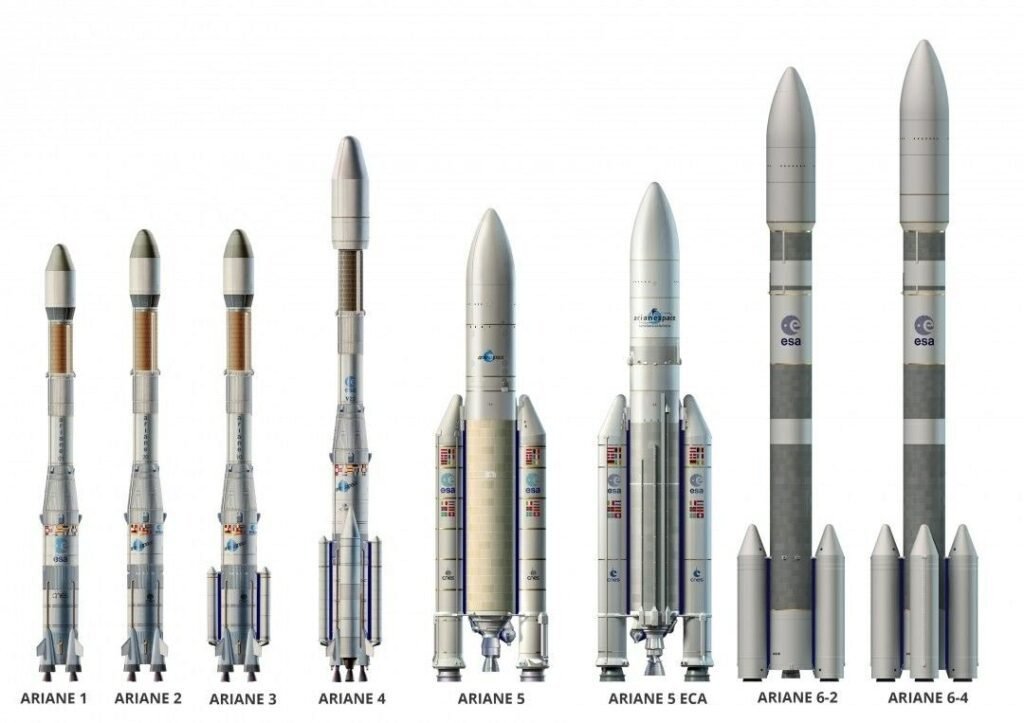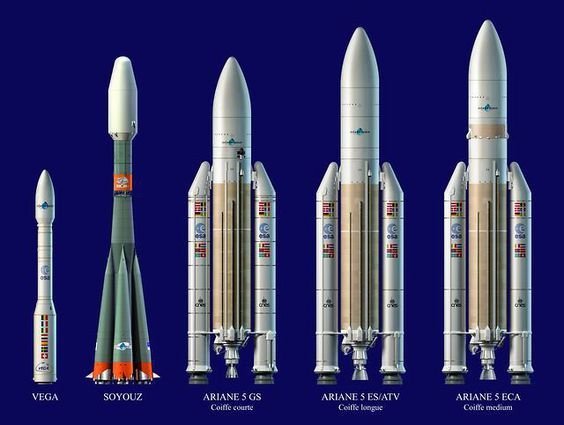On the 5th of July, the last European rocket Ariane 5 will be launched on Kourou base, French Guiana. After 27 years of service.
Source: Spaceflight Now
Europe’s iconic Ariane 5 rocket, with its liquid hydrogen-fueled core stage and solid rocket boosters, has guaranteed Europe’s access to space, providing a unique capacity for launching satellites and spacecraft into precise orbits over almost three decades.
Its long run comes to an end when the final Ariane 5 rocket lifts off from Kourou, French Guiana, no earlier than July 5, carrying the French military communications satellite Syracuse 4B and the German communications satellite Heinrich Hertz to geostationary transfer orbit. The 65-minute launch window window runs 7 p.m. to 8:05 p.m. local time (6:00-7:05 p.m. EDT / 2200-2305 UTC).
The rocket should be launched yesterday, in 4th July, but bad weather stopped it.
Ariane 5’s much heralded debut launch in June 1996 ended in failure and its second launch a year later was only partially successful. But after these initial setbacks the rocket has had a commendable record of success across 116 total launch attempts.
For most of its history, the rocket has proved a true workhorse, launching dozens of commercial satellites into geostationary orbit as well as ensuring that the nations of Europe had the means to get national security payloads into orbit.
Important launches made by Ariane 5:
- Rosetta mission, send a probe to a comet’s surface.
- Space Observatory Herschel, to observe the early universe.
- Space Telescope Planck, to study Big Bang radiation.
- The euro-japanese mission BepiColombo, to planet Mercury.
- James Webb Space Telescope.
- Juice mission, the last Ariane 5’s interplanetary launch.
Ariane 5’s final launch, which has been delayed for two weeks because of faulty pyrotechnical transmission lines, will be its 117th. In that time the rocket, operated by Arianespace for the European Space Agency (ESA), has endured only a total of two failures and three partial failures, giving it a success rate of 96 percent.
The rocket followed Ariane 4 and proved a major evolution for the Ariane family with significantly more power than its predecessor and benefiting from more advanced technologies.

A combination of liquid and solid propulsion systems provided the rocket with a powerful and reliable launch capability. Its two-stage design comprise a cryogenic main stage powered by Vulcain engines and solid rocket boosters (SRBs) providing the initial thrust during liftoff.
Three successive generic versions – Ariane 5G, Ariane 5G+ and Ariane 5GS, along with the Ariane 5 ES, which was used for various missions including ESA’s Automated Transfer Vehicle (ATV) to the International Space Station (ISS) – were all previously retired from service leaving one operational configuration, the Ariane 5 ECA (Evolved Cryogenic, model A).

With the ability to carry heavy payloads of up to 10 tons to geostationary transfer orbit (GTO), the European workhorse rocket has been instrumental in launching large communication satellites, scientific payloads and even interplanetary missions, a high capacity which made it a reliable choice for both commercial customers and space agencies worldwide.
This Ariane 5 ECA variant featured an upgraded core stage and increased payload capacity, enabling it to carry one, two or three very large satellites. A dual launch configuration was the most commonly used.



